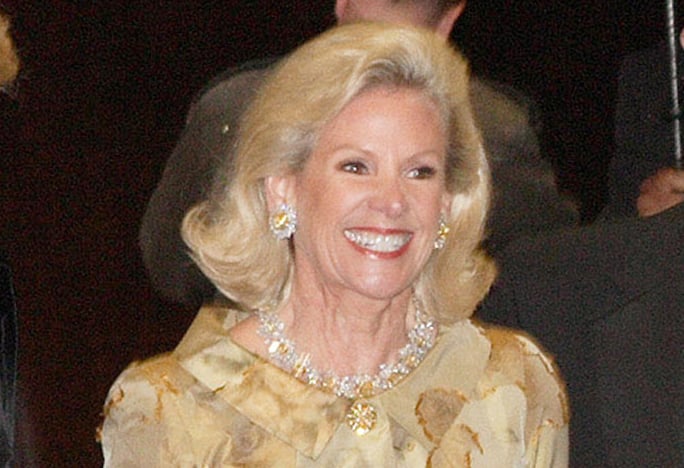People
The Craziest Lines From the New York Times Profile of Socialite Dede Wilsey
Wilsey has a message for her detractors.

Wilsey has a message for her detractors.

Eileen Kinsella

Laura Holson’s lengthy profile of embattled San Franciso socialite Dede Wilsey is the gift that keeps on giving.
Months after Wilsey supposedly resigned from her position as president of the Fine Arts Museums of San Francisco (FAMSF), she emphatically denied the resignation to Holson, brandishing an iPhone photo of a recent June board meeting to prove her point.
“Her coal eyes flashed when she was asked to identify the anonymous wag who had told a reporter her run had come to an end. ‘I have no idea, and I’d like to kill them,’ Ms. Wilsey said.”
The controversy over Wilsey’s non-resignation is the through line of the Times profile, but there are a number of other gems from Holson’s lunch visit with Wilsey at her Napa Valley estate, as well as conversations with colleagues about the museums’ leadership that makes the reader feel a bit like watching a parade of characters cast in a Christopher Guest movie.
The profile does nothing to diminish Wilsey’s longstanding public reputation as a near-caricature of a clueless, mean-spirited, rich woman. At one moment, she expresses a wish to kill someone while holding a white Maltese named “Dazzle” on her lap. And there’s this: “the top of its head was stained pink from her lipstick kisses.”
Wilsey seems dismissive of the fact that “the state attorney general’s office is investigating whether a 2014 payment to a colleague authorize by Ms. Wilsey violated laws governing nonprofits,” or that FAMSF “recently paid out $2 million to settle a [whistleblower] case,” or that two board members resigned in protest in April, with one telling a reporter that Wilsey ran the organization “like a personal fiefdom.”
One of the more telling takeaways came when former FAMSF director, Harry Parker, suggested that Wilsey “can laugh and joke with anyone, even a truck driver,” which presumably does not reflect a belief that truck drivers, as a group, lack a sense of humor. He goes on to say that her failing “is that she has not always listened to what people told her if they didn’t have social standing.”
Of the scathing, bestselling memoir, Oh, The Glory of It All, penned by her stepson Sean in 2005, Wilsey said: “I actually had a good relationship with Sean, and I have no idea why he decided to write that idiotic book.” The book “cast her as a ruthless gold digger,” according to the Times.
From a different angle, it’s fair to say that Wilsey has been a generous donor and capable solicitor where other philanthropists are concerned:
Her name is on the Diane B. Wilsey Center for the Opera. She raised funds to restore Grace Cathedral, one of the city’s fabled landmarks, and a Catholic girls school in the Mission District. But Ms. Wilsey is best known for her patronage of the de Young in Golden Gate Park. Many people credit her with saving it after the original 1919 structure was damaged in the 1989 earthquake. She led the campaign to raise $208 million to build a new one, donating $10 million herself and sweet-talking or strong-arming the balance through her deep connections to Northern California’s aristocrats.
Her son Trevor Traina also recounts this revealing anecdote about her ability to raise funds:
“Mom and I were dancing at a formal event,” said her son Trevor, a technology entrepreneur, “and she said, ‘Dance me over to that man over there.’ She reached over to the person and said to me, ‘He is going to give me $1 million for our museum.’ The man said, ‘I am?’”
A month later, she got a $1 million check from the man in question.
Though Wilsey tells the Times she expects her enemies to be surprised when they learn she is not leaving her position at FAMSF, she does concede there’s a new arrangement in place under which she will share more management responsibility with six other trustees, a move she supposedly sponsored.
Perhaps the most revealing story from the Wilsey profile came with an anecdote about her then two-year old granddaughter, who once smacked her head on a glass table.
I heard this horrible crash. . .and she came out from under the table with this big bang on the head. And I said to her: “Daisy, this is not going to be the last time you hit your head on a glass ceiling. But you did the right thing. Never cry. Never show that it hurts. That’s the most important thing you can learn from hitting your head today.”